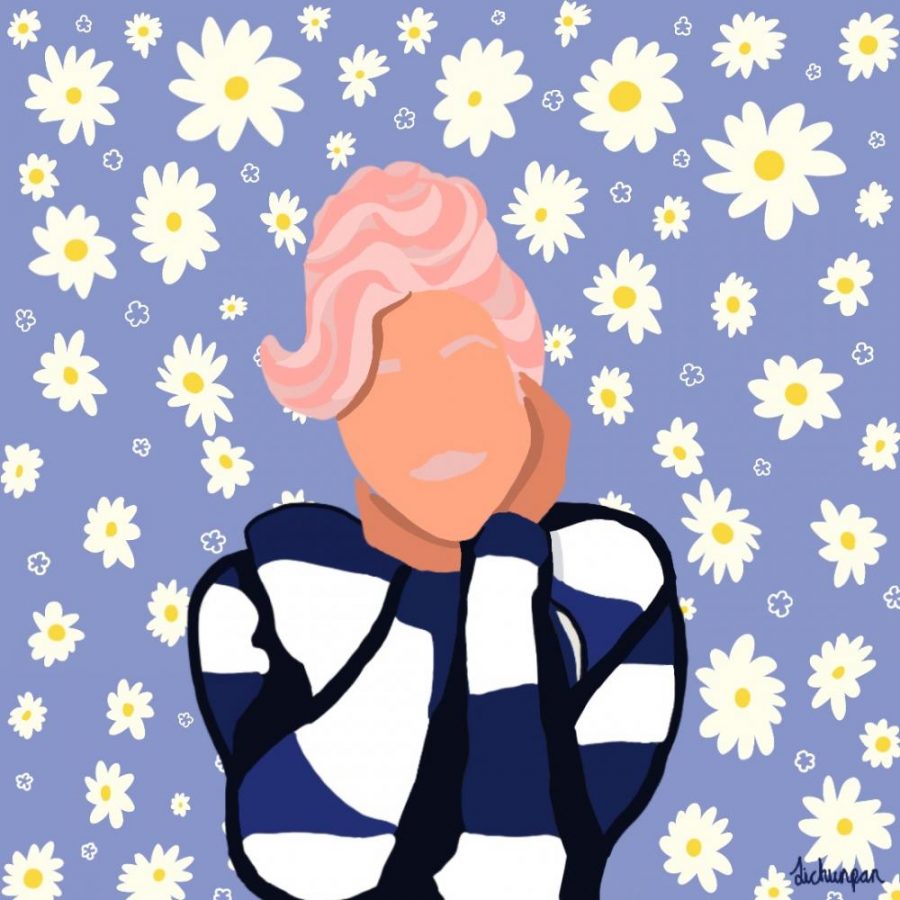Being America’s “Teenage Dream” is hard. Katy Perry’s sixth studio album, “Smile,” is proof that it is difficult to continue to thrive in the music world when popular artists rely on the sound of their past, restraining their growth and progress. Perry’s music played a large part in defining the pop scene of the early 2000s, but times have changed and so has the music on the radio. Yet in “Smile,” Perry returns to her party anthem past, nearly to a fault.
Perry has fallen victim to every successful artist’s worst nightmare: not living up to their best received album in the time afterward. Ten years ago, Perry’s “Teenage Dream” debuted at number one on the US Billboard Hot 200 and later was certified eight times platinum. The album was nominated for seven Grammy awards, between the album and its singles. The album dazzled with her most iconic tracks — “California Gurls,” “Firework” and “The One That Got Away” to name a few — all made addictive by her quirky lyricism and perfected production methods. Unbeknownst to anyone at the time, the singer had reached her peak.
Fast-forward to 2017: the second album released after “Teenage Dream,” “Witness,” found itself lost in the midst of a superstar unsure of herself, attempting to go deeper than the zany storytelling and vague positive messages that served as her most political references. Her lyrics are caught in an awkward attempt to stay relevant and to appear “woke.”
In the present day, “Smile” could nearly be taken as an acknowledgement of defeat. The album sheds the attempts at relevancy from “Witness” and returns to Perry’s roots of empowering pop chants. She gives into the 2010s party anthem indulgence, just enough to satisfy any nostalgic cravings.
The title track, “Smile” is a glossy, studio-polished track set to the classic Perry narrative of overcoming obstacles and celebration. The song “Smile” might be the most like what fans would usually expect of Perry, holding onto the vague but feel-good motivational messages and production techniques that she used in her prime. “Resilient,” following the same theme, is only notable for abandoning its electronic-heavy flair for dainty synths, creating an acoustic-like sound. It is a track made to showcase her lyrics, as she gives a heartfelt pep talk: “I am resilient. Born to be brilliant.”
It is pleasing to see Perry recover from “Witness” and embrace her own style again, even if her perceived optimism is as bold, and sometimes obnoxious, as her neon wigs and cartoon-like costumes. On this album, her method of activism is general positivity and it seems like her agenda is no deeper than that.
Perry’s cheeky storytelling is still as ripe as it was on “Teenage Dream,” as can be seen in the song “Harleys In Hawaii,” her collaboration with Charlie Puth. It is a fresh sound for Perry, one that gives her room to breathe, and proves it’s possible to invent something new out of the old self. “Harleys In Hawaii” achieves what “Witness” attempted to do: create a sound that is distinct from Perry’s classic work, but is still unmistakably her own.
It seems that her struggle to remain trendy on “Witness” was a wake up call. “Smile” feels much more confident, but it also can’t help but feel like retreating to what is familiar and most highly regarded, achieving little more than the expectations set for her. There are glimpses of a new Perry, a more open Perry, that are easily lost in highly saturated tracks that occupy most of the album. “Never Really Over” contains a more experimental electronic style for Perry and “Champagne Problems” is a very intimate song for the pop singer, stripping her of her usual sugarcoated emotions. These rarities, though, are lost in an attempt to recreate her “Teenage Dream”-era pop and party culture. Katy Perry includes not one, but two songs about crying on the dance floor (“Teary Eyes” and “Cry About It Later”). Maybe those catchy hooks and club-worthy songs were enough to satisfy listeners in 2013, but pop music has changed a lot since then.
Perry still might not have the same dazzle she possessed with “Teenage Dream,” but on “Smile,” she’s in the process of accepting that and learning to embrace what she does best, even if it is rather dated. “Smile” shows an improvement from her last album. She becomes authentic again and her album shows spots of maturity beneath its sugary veneer. She is not the same person she was in 2010, but she can still celebrate what got her to “Smile” with the same zeal she had before — even if it’s holding her back.
Email Ana Cubas at [email protected].

























































































































































